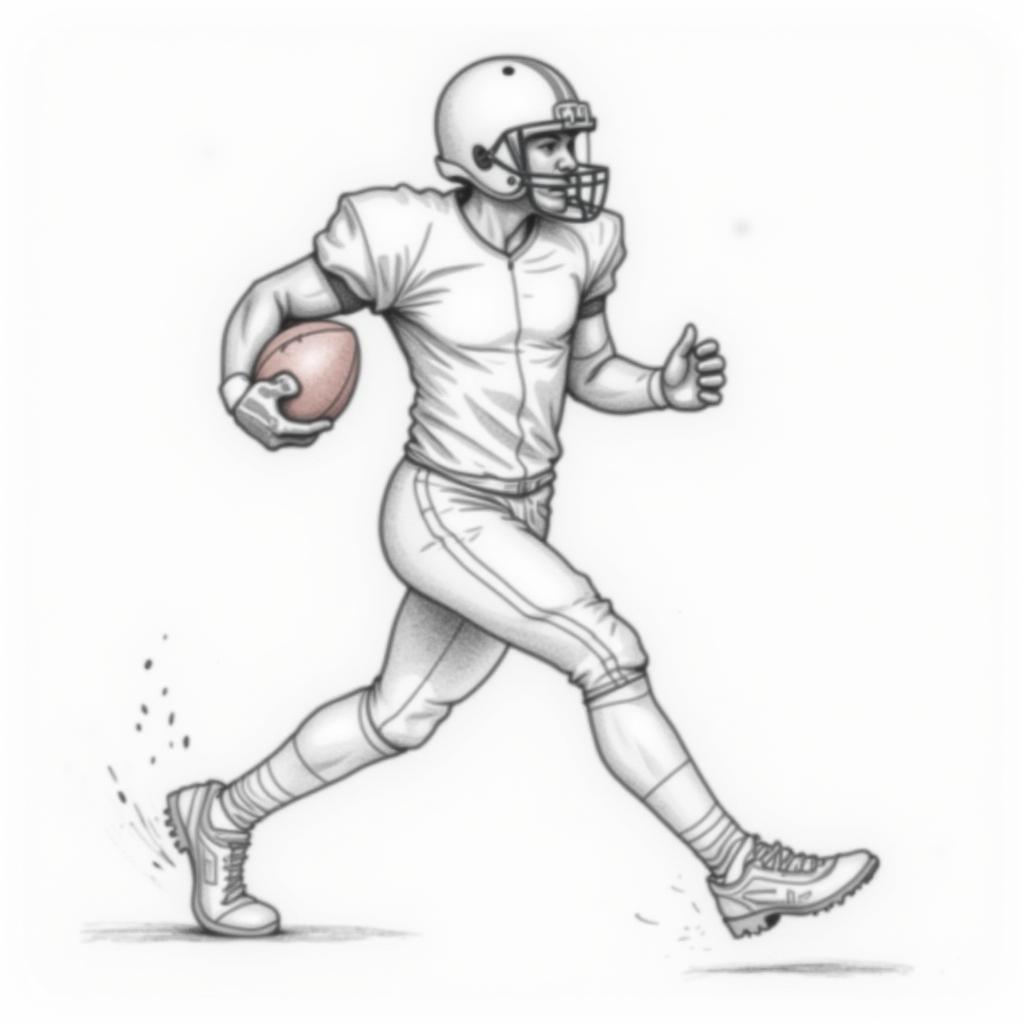Mastering the Art of Drawing Football Players
November 4, 2024Drawing football players captures the dynamism and excitement of the beautiful game. Whether you’re aiming for a realistic portrait or a stylized sketch, understanding the fundamentals of figure drawing, anatomy, and movement is crucial. This guide will equip you with the techniques and insights to bring your football player drawings to life.
Getting Started: Basic Anatomy and Proportions
Before diving into action-packed poses, let’s establish a solid foundation. Accurate proportions are key to creating believable figures. A typical adult figure is roughly seven to eight heads tall. Pay close attention to the length of the limbs, the width of the shoulders, and the size of the head relative to the body. Understanding basic muscle groups, like the quadriceps, biceps, and deltoids, will further enhance your drawings. Practicing simplified stick figures and gesture drawings can help you grasp movement and flow.
Remember, drawing football players is about more than just replicating what you see. It’s about understanding the underlying structure and how it influences the player’s movement and power. Once you’ve internalized these principles, you can start experimenting with different styles and levels of detail.
Capturing Dynamic Poses: Movement and Energy
Football is a sport of constant motion. From powerful sprints to gravity-defying leaps, capturing these dynamic poses is essential for creating engaging drawings. Start by observing real-life footballers in action. Watch how their bodies move, how their weight shifts, and how their muscles flex. You can also use photographs and video footage as references. Try to capture the essence of the movement, rather than just copying the pose exactly. Exaggerating certain aspects, like the bend of a knee or the extension of an arm, can add drama and impact to your drawing.
Think about the story you want to tell with your drawing. Are they sprinting for the goal? Are they making a crucial tackle? The pose should reflect the action and emotion of the moment. Using guidelines and construction lines can help you map out the pose before adding details.
 Drawing a Football Player in a Dynamic Pose
Drawing a Football Player in a Dynamic Pose
Adding Details: Kits, Equipment, and Facial Expressions
Once you’ve nailed the pose, it’s time to add the finishing touches. Accurately depicting the player’s kit, including the jersey, shorts, socks, and boots, adds authenticity to your drawing. Pay attention to the folds and creases in the fabric, as well as the logos and sponsors. The football itself is another important element. Consider its placement and how it interacts with the player’s body. Finally, don’t neglect the facial expression. It can convey a range of emotions, from determination and focus to joy and celebration.
Small details can make a big difference. Adding elements like sweat, grass stains, and even the texture of the ball can elevate your drawing to a new level of realism. Don’t be afraid to experiment with different techniques and styles to find what works best for you.
From Sketch to Masterpiece: Tips for Improvement
Improving your drawing skills takes time and practice. Don’t get discouraged if your early attempts don’t meet your expectations. Keep practicing, experiment with different techniques, and seek feedback from others. Studying the work of other artists can also be a great source of inspiration.
Remember, drawing is a journey, not a destination. Enjoy the process of learning and improving, and most importantly, have fun!
Conclusion
Drawing football players is a rewarding challenge that combines artistic skill with a passion for the sport. By mastering the fundamentals of anatomy, proportions, and movement, you can create compelling and dynamic drawings that capture the excitement of the beautiful game. So grab your pencils, study your favorite players, and start creating your own football masterpieces. Remember to check out our article on xu hướng tấn công của cầu thủ fo3 for further inspiration.
FAQ
-
What are the best pencils for drawing football players?
A variety of pencils, from H2 for light sketching to B4 for darker shading, can be used. -
How can I improve my understanding of anatomy?
Studying anatomical diagrams and practicing figure drawing are excellent ways to improve. -
What are some good resources for finding reference images?
Sports photography websites, videos, and even live matches can provide valuable references. -
How can I add more dynamism to my poses?
Focus on capturing the weight shift and flow of movement in the player’s body. -
How do I draw realistic facial expressions?
Observe real-life expressions and practice drawing different features of the face. -
What are some common mistakes to avoid when drawing football players?
Ignoring proportions, rushing the sketching phase, and neglecting details like the kit and equipment are common pitfalls. -
How can I develop my own style?
Experiment with different techniques, study the work of other artists, and practice consistently.
Need more help with drawing football players?
Check out some of our other articles: xu hướng tấn công của cầu thủ fo3.
For any further assistance, please don’t hesitate to contact us. Call: 0396443476, Email: [email protected] or visit us at 23 Tháng 3, Đắk Nia, Gia Nghĩa, Đắk Nông, Việt Nam. We have a 24/7 customer service team.